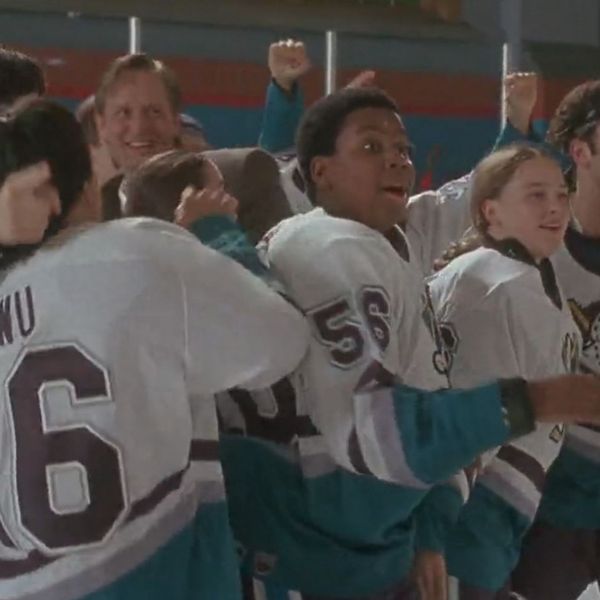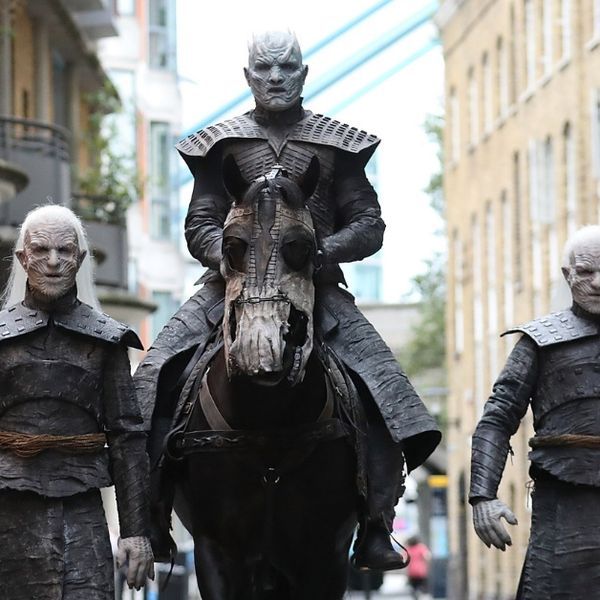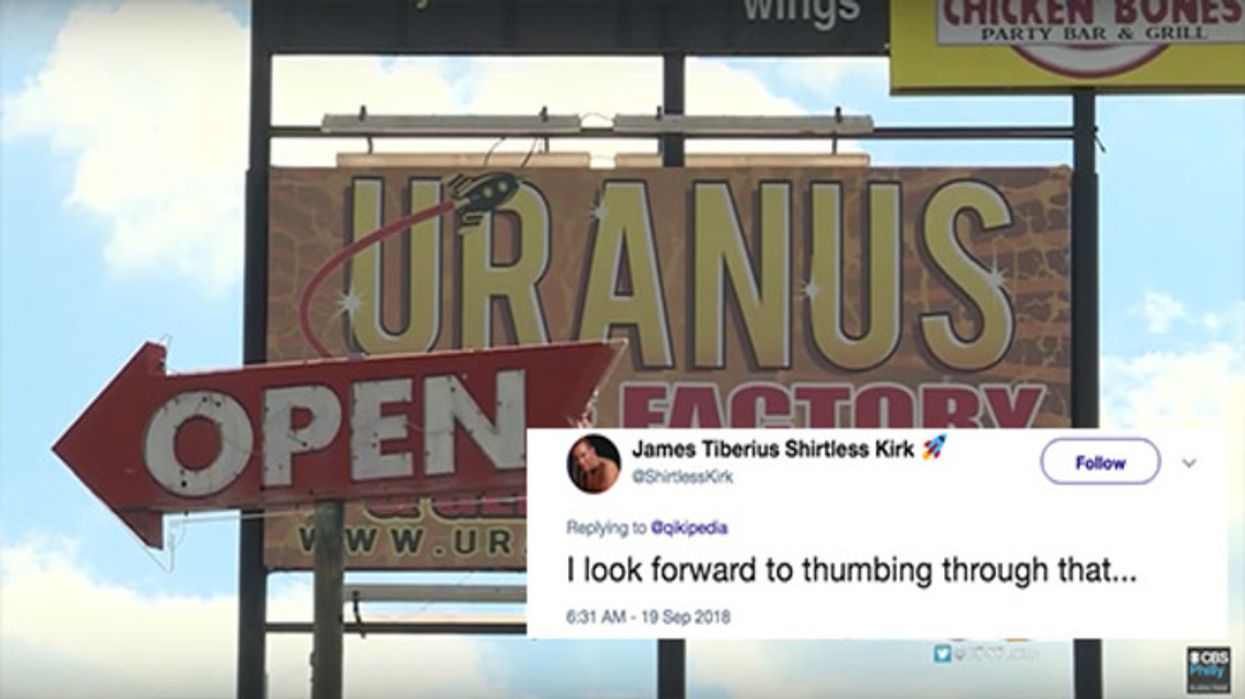May, 2005 May is Asian American Heritage month. It seems this month has become a time when I am called upon to share my thoughts on the contributions Asian Americans have made to this country with diverse groups. Two years ago, I toured U.S. military bases in Germany speaking of Asian American history. Last year, I was in Little Rock, Arkansas, for the opening of eight museum exhibits, a major symposium, and a speech on the subject. This month began with a return to Little Rock with a similar mission, this time at nearby Camp Pike to the U.S. Army, 90th Regional Readiness Command. These are the men and women of the U.S. military who have served or are ready to serve in the hot spots of today such as Iraq and Afghanistan. After my speech, I enjoyed a good southern fried catfish lunch with a group of the committee members. It was a privilege to share some time and thoughts with soldiers who are serving us so proudly.
 Then it was on to Louisville, Kentucky, and a different but equally special audience. It was one hundred bright, young high school students from throughout the nation. They were being honored at a banquet with scholarships from Toyota Motor Sales U.S.A. I served as the keynote speaker at the dinner. These young people are the cream of the crop - smart, energized scholars, who had, as well, contributed to the betterment of their respective communities in various ways. It was an uplift just to be in the company of these spirited young leaders of tomorrow.
Then it was on to Louisville, Kentucky, and a different but equally special audience. It was one hundred bright, young high school students from throughout the nation. They were being honored at a banquet with scholarships from Toyota Motor Sales U.S.A. I served as the keynote speaker at the dinner. These young people are the cream of the crop - smart, energized scholars, who had, as well, contributed to the betterment of their respective communities in various ways. It was an uplift just to be in the company of these spirited young leaders of tomorrow.
The big challenges were across the Pacific in Japan. The Japanese American National Museum, which I served as Chairman of the Board for two terms and still serve as a Trustee, had scheduled its first board meeting outside the U.S. in Tokyo.
 We want to contribute to strengthening our bridge across the Pacific in U.S.- Japan relations. In conjunction with our board meeting, we held a major symposium on U.S.- Japan relations. I was a part of the U.S. panel together with Senator Daniel Inouye of Hawaii and General Eric Shinseki, former Army Chief of Staff. It was a rare opportunity to share the experience of Japanese Americans with the leadership of the people of Japan. All Americans, I strongly believe, can contribute, each in our own way, to the betterment of America as a member of this global society. Japanese Americans can serve in a unique way in our relations with Japan. The symposium, meetings, press interviews, and personal conversations were engaging exchanges and we were handsomely received. Foreign Minister of Japan, Nobutaka Machimura, hosted us to a lavish reception at Japan's diplomatic residence, Iikura House. U.S. Ambassador Thomas Schieffer similarly hosted us the following evening at the historic U.S. Ambassador's residence that General Douglas MacArthur had once called home.
We want to contribute to strengthening our bridge across the Pacific in U.S.- Japan relations. In conjunction with our board meeting, we held a major symposium on U.S.- Japan relations. I was a part of the U.S. panel together with Senator Daniel Inouye of Hawaii and General Eric Shinseki, former Army Chief of Staff. It was a rare opportunity to share the experience of Japanese Americans with the leadership of the people of Japan. All Americans, I strongly believe, can contribute, each in our own way, to the betterment of America as a member of this global society. Japanese Americans can serve in a unique way in our relations with Japan. The symposium, meetings, press interviews, and personal conversations were engaging exchanges and we were handsomely received. Foreign Minister of Japan, Nobutaka Machimura, hosted us to a lavish reception at Japan's diplomatic residence, Iikura House. U.S. Ambassador Thomas Schieffer similarly hosted us the following evening at the historic U.S. Ambassador's residence that General Douglas MacArthur had once called home.
After our many diplomatic events in Tokyo, we traveled to the World Expo at Aichi near Nagoya. This massive exposition sprawled over a vast green valley. It would have required days to visit just the highlights of this Expo. We had only five hours. However, we had with us a special entrée - in our party were two VIPs, a U.S. Senator and a U.S. General.
 As long lines of people waited patiently at the pavilion entrances, we were quickly whisked past them and escorted in through a back way. We were able to visit a few of the major exhibits in the limited time that we had. At the Expo Theme Pavilion, we saw a rare discovery - the frozen remains of a prehistoric woolly mammoth; at the Toyota Pavilion we saw a spectacular Cirque de Soleil-like show featuring a single passenger futuristic concept vehicle and a musical band made up of anthropomorphic robots. At the Hitachi Pavilion, we saw exhibits that demonstrated nature and technology working together to protect the environment. On the way to another pavilion, we walked past a long "green wall" about two stories tall with a huge diversity of plants growing from it. We were told that "walls" like these would help counter global warming. Finally, after a fast and exhausting tour, we ended our visit to the Aichi Expo at the United States Pavilion. We were greeted by a giant holographic image of Benjamin Franklin speaking in Japanese - of all unexpected things - as well as in English. This year is his 300th birthday and the U.S. exhibit was on electricity and of Franklin's discovery of the proof of electricity with lightening.
As long lines of people waited patiently at the pavilion entrances, we were quickly whisked past them and escorted in through a back way. We were able to visit a few of the major exhibits in the limited time that we had. At the Expo Theme Pavilion, we saw a rare discovery - the frozen remains of a prehistoric woolly mammoth; at the Toyota Pavilion we saw a spectacular Cirque de Soleil-like show featuring a single passenger futuristic concept vehicle and a musical band made up of anthropomorphic robots. At the Hitachi Pavilion, we saw exhibits that demonstrated nature and technology working together to protect the environment. On the way to another pavilion, we walked past a long "green wall" about two stories tall with a huge diversity of plants growing from it. We were told that "walls" like these would help counter global warming. Finally, after a fast and exhausting tour, we ended our visit to the Aichi Expo at the United States Pavilion. We were greeted by a giant holographic image of Benjamin Franklin speaking in Japanese - of all unexpected things - as well as in English. This year is his 300th birthday and the U.S. exhibit was on electricity and of Franklin's discovery of the proof of electricity with lightening.
 From lightening to the futuristic Segway human transporter vehicle, it was a comprehensive exhibit on the powers of electricity. The visit ended with a relaxing reception in the Benjamin Franklin Room. An African American young woman serving as a guide impressed me. She spoke rather good Japanese. It was heartening to see young Americans learning foreign languages, going abroad, and serving as citizen ambassadors to the world.
From lightening to the futuristic Segway human transporter vehicle, it was a comprehensive exhibit on the powers of electricity. The visit ended with a relaxing reception in the Benjamin Franklin Room. An African American young woman serving as a guide impressed me. She spoke rather good Japanese. It was heartening to see young Americans learning foreign languages, going abroad, and serving as citizen ambassadors to the world.
The other mission of this trip to Japan was a promotional tour for my autobiography, "To the Stars," which had just been published in Japanese translation. Titled "Hoshi ni Mukatte," I wanted the fans of Japan to know of its publication. I did radio, television, and newspaper interviews, and, of course, the inevitable bookstore signings. I even did a college lecture on Japanese American history at Bukkyo University in Kyoto. A book signing also followed this event.
 The word is now out in Japan about my autobiography, "Hoshi ni Mukatte."
The word is now out in Japan about my autobiography, "Hoshi ni Mukatte."
My reward for all this exciting but also fatiguing tour was a fabulous treat - a classic geisha party in the storied geisha district of Gion hosted by the publisher of my book, Mr. Ito. Two elegantly charming geishas in lovely kimonos and elaborate headdresses greeted our party at the entrance and ushered us upstairs to a spacious traditional room The long black lacquer table had been set with glistening lacquer bento boxes. My geisha smiled and gestured me to my thick cushion on the soft tatami floor. From that point on, I was completely in her care. She lifted the top off my lacquer box to reveal a sumptuous meal. She suggested I raise my tiny sake cup up to her and she poured the hot liquor for me with a gracefulness only a geisha can perform. As I sampled the delectable morsels from my lacquer box, she continued to charm me with her wit and sparkling laughter.
 She even took my chopsticks from me and fed me some delicious bits from my box. However, she did not eat with me. Her role was to simply serve me and keep me charmed. My manager, Brad Altman, sitting across from me, also had his own personal geisha serving and delighting him. After the meal, the two geishas disappeared and a woman, who plays the samisen, or a stringed, guitar-like instrument, seated herself off to the side of the sliding shoji door. Cued by her first "twang" on the samisen, the shoji doors silently slid open to reveal my geisha in a classic dance pose. The music began and her lyrical movements, like flower petals swaying in a soft spring breeze, transported all of us. The shoji closed, then, re-opened to delight us with the second geisha's dance. Hers was just as lovely, just as transporting. This must have been what it was like to be a shogun in old Japan. We were literally beamed back in time.
She even took my chopsticks from me and fed me some delicious bits from my box. However, she did not eat with me. Her role was to simply serve me and keep me charmed. My manager, Brad Altman, sitting across from me, also had his own personal geisha serving and delighting him. After the meal, the two geishas disappeared and a woman, who plays the samisen, or a stringed, guitar-like instrument, seated herself off to the side of the sliding shoji door. Cued by her first "twang" on the samisen, the shoji doors silently slid open to reveal my geisha in a classic dance pose. The music began and her lyrical movements, like flower petals swaying in a soft spring breeze, transported all of us. The shoji closed, then, re-opened to delight us with the second geisha's dance. Hers was just as lovely, just as transporting. This must have been what it was like to be a shogun in old Japan. We were literally beamed back in time.
 Then, the silliness began. I was invited up by my geisha to play the "paper, rock, scissors" game with her. The loser had to sip some sake. I lost often. Once she had me well loosened, I was invited to join them in a "baseball dance" geisha style. I clumsily tried to imitate her graceful movements. I made a laughing fool of myself - but according to tradition, one is supposed to act like a giddy ninny at a geisha party. So, I was being very traditional that night at a classic geisha house in the Gion. It was an enchanting evening I will long remember. I savored that memory the next morning as well. Is that what is called a "hangover?"
Then, the silliness began. I was invited up by my geisha to play the "paper, rock, scissors" game with her. The loser had to sip some sake. I lost often. Once she had me well loosened, I was invited to join them in a "baseball dance" geisha style. I clumsily tried to imitate her graceful movements. I made a laughing fool of myself - but according to tradition, one is supposed to act like a giddy ninny at a geisha party. So, I was being very traditional that night at a classic geisha house in the Gion. It was an enchanting evening I will long remember. I savored that memory the next morning as well. Is that what is called a "hangover?"
The translation, publication, and the fond memories of the promotional tour for my autobiography would not have been possible had it not been for the good efforts of Rev. Chiyu Sadakane and his charming daughter, Yumi-san. They did a fine job of translating "To the Stars" into "Hoshi ni Mukatte." My heartfelt gratitude goes out to them for having made a long held dream a reality beyond all expectations. Domo arigatoh gozaimasu.
Some Residents Of Uranus, Missouri Are Not Happy About The Name Of Their New Local Newspaper 😆
There's nothing like a good pun about human anatomy. Really gets the juices flowing!
The Uranus Examiner is coming to this Missouri town. Yes, really. https://t.co/RKy7kDcCFT— The Kansas City Star (@The Kansas City Star) 1536865442.0
Owners of the new Uranus Examiner must have been snickering as they announced the paper's name. Apparently, it's caused quite the controversy in the small town of Uranus, Missouri, over the last few days.
Residents are divided over whether the pun is an embarrassment or perfectly snarky:
“It’s a serious newspaper!” declares the managing editor of the Uranus Examiner. @nypost https://t.co/uig5eYxT2t— Bryan A. Garner (@Bryan A. Garner) 1537038088.0
Folks on the internet responded with maturity and composure after learning about the Uranus Examiner.
Oh, wait. No they didn't.
@qikipedia Uranus Examiner... it's got a nice ring to it 😀.— Roy Elliott (@Roy Elliott) 1537364058.0
I pitched “The Regina Monologues” as the name for my column at the Regina Leader-Post and was unceremoniously turn… https://t.co/aejjXcooWK— Jana G. Pruden (@Jana G. Pruden) 1536938407.0
If we ever colonize Uranus, the hardest part will be picked a newspaper name. "The Uranus Examiner"? Gonna be rough.— Scott Johnson (@Scott Johnson) 1537192690.0
@qikipedia How is it I've lived in Missouri my whole life and never gone through Uranus— Joshua Ryman, Sigma Grindcore Consultant (@Joshua Ryman, Sigma Grindcore Consultant) 1537366074.0
The newspaper name is a source of controversy — “Butt I like it,” the Uranus mayor said. https://t.co/xZWn4qthd1— Kaitlyn Alanis (@Kaitlyn Alanis) 1536865208.0
If you think about it... there might actually be a method to the madness here. The brand new paper's name has received widespread media coverage over this past week. Simply put... everyone's talking about Uranus.
In terms of publicizing their new venture, the owners of the Uranus Examiner have actually done a pretty sweet job!
In the video above, a woman suggests the paper should have been called "The Pulaski County Examiner."
If you ask me, that's TOTALLY BORING, and wouldn't have generated as much interest and publicity for the paper. So while the name might be cringeworthy to some, you can bet Uranus that it'll stick around. Who knows, Uranus might even grow as a result!
H/T: Indy100, The Kansas City Star
Woman Was Fired For Refusing To Wear A Bra At Work—And Now She's Suing
Christina Schell, from Alberta, Canada, stopped wearing bras three years ago citing health reasons.
While Schell did not specify the health reasons, she did state she finds them to be "horrible."
But after her refusal to sign or adhere to a new enforced dress code policy to wear a bra or tank top under her work shirt at a golf course grill where she worked, Schell was promptly fired.
Now, the 25-year-old has filed a human rights violation against the Osoyoos Golf Club, Osoyoos, in British Columbia, Canada.
Schell said:
"I don't think any other human being should be able to dictate another person's undergarments."
When she asked the general manager, Doug Robb, why she had to comply, the manager told her the mandate was for her protection.
Robb allegedly said:
"I know what happens in golf clubs when alcohol's involved."
After losing her job, she brought the case to the British Columbia Human Rights Tribunal and told them the club's dress code was discriminatory because the rule didn't apply towards male employees.
Schell told CBC:
"It's gender-based and that's why it's a human rights issue. I have nipples and so do the men."
David Brown, an employment lawyer in Kelowna, BC, said gender-specific dress codes could be viewed as discriminatory under the BC Human Rights Code.
He stated:
"It's an interesting question as to whether or not an employer can dictate the underwear that women can wear, but they don't say anything about the underwear that men can wear, and does that create an adverse impact on the individual?"
Brown added:
"If this policy is found to be discrimination, the next question is does the employer have a bonafide occupational requirement to essentially impose this on the individual?"
"I'm kind of scratching my head as to what that occupational requirement would be."
@GlobalBC The policy is sexist the peopl supporting it are sexist. Hope she wins her complaint— Lori bell (@Lori bell) 1529692660.0
@Shelby_Thom @WoodfordCHNL @GlobalOkanagan @GlobalBC Then men should have to wear either a tank top or undershirt— caffene fiend (@caffene fiend) 1529624161.0
@SoldByBrock @Shelby_Thom @GlobalOkanagan @GlobalBC What does common courtesy have to do with wearing a bra? Breast… https://t.co/ZVI2xDdpgf— M Shumway (@M Shumway) 1529843759.0
As for the tank top option, due to working under oftentimes extreme heat serving tables outsides, Schell did not want to wear another layer of clothes just because of her gender.
Schell said:
"It was absurd. Why do you get to dictate what's underneath my clothes?"
Employment lawyer Nadia Zaman told CBC that the club can enforce a gender-specific policy as they deem necessary as long as the establishment can prove it is for the occupational safety of its workers.
But the attorney questioned if forcing female employees to wear a bra was applicable in this case.
Zaman stated:
"If they simply require that female employees wear a bra but then they don't have a similar requirement for males, and they can't really justify that … then there is a risk that their policy's going to be deemed to be discriminatory."
Under British Columbia's discrimination law, it is illegal for employers:
'to discriminate against any individual because of his race, color, religion, sex, or national origin'.
@GlobalBC @globalnews Logistically bras or the absence of does not impact health or work performance. That is my v… https://t.co/65cLHBMowf— Louisette Lanteigne (@Louisette Lanteigne) 1529769211.0
McDonald's employee Kate Gosek, 19, agrees with Schell in that the dress code is "unnecessary." She too was harassed by her employers at a McDonald's in Selkirk, Manitoba, over refusing to wear a bra.
"She just told me that I should put on a bra because, McDonald's—we are a polite restaurant and no one needs to see that."
Schell's case sparked plenty of debates on Twitter.
@DunnMan77 @GlobalBC It's just discriminatory, woman shouldn't have to wear bras if they don't want to. As well as… https://t.co/RXhRVWUuNy— Mary Johnson (@Mary Johnson) 1529685276.0
@DunnMan77 @GlobalBC Men do not have to wear underpants if they don't want to. As of right now there are no laws to… https://t.co/l8FuPVybWo— Mary Johnson (@Mary Johnson) 1529686418.0
@GlobalBC Women have the right not to be forced to wear a bra Shaving & makeup also is a choice. If you want to do… https://t.co/Ybkj6PLDnD— Lozan (@Lozan) 1529686156.0
@Lozan72 @GlobalBC I would completely understand her and your argument if we were talking about a potential law to… https://t.co/trRyNAubn4— Chris George (@Chris George) 1529690293.0
@GlobalBC This story frustrates me. There's no dress code equivalent for men? Well if I saw the outline of a male s… https://t.co/5YbAvXKRcO— Molly Max (@Molly Max) 1529705327.0
Schell is not alone in her disdain for bras.
@GlobalBC I personally HATE wearing a #bra absolutely hate it with passion and unashamed to admit it. I HATE BEING… https://t.co/GEi3LtxIDa— Lozan (@Lozan) 1529686305.0
Schell is still waiting to hear from the Human Rights Commission about her claim.
H/T - GettyImages, Twitter, Indy100, CBC












